
EDA-AI
Implementation of NeurIPS 2021 paper "On Joint Learning for Solving Placement and Routing in Chip Design" & NeurIPS 2022 paper "The Policy-gradient Placement and Generative Routing Neural Networks for Chip Design".
Stars: 196

EDA-AI is a repository containing implementations of cutting-edge research papers in the field of chip design. It includes DeepPlace, PRNet, HubRouter, and PreRoutGNN models for tasks such as placement, routing, timing prediction, and global routing. Researchers and practitioners can leverage these implementations to explore advanced techniques in chip design.
README:
- NeurIPS 2021 paper "On Joint Learning for Solving Placement and Routing in Chip Design" (DeepPlace)
- NeurIPS 2022 paper "The Policy-gradient Placement and Generative Routing Neural Networks for Chip Design" (PRNet)
- NeurIPS 2023 paper "HubRouter: Learning Global Routing via Hub Generation and Pin-hub Connection" (HubRouter)
- AAAI 2024 paper "PreRoutGNN for Timing Prediction with Order Preserving Partition: Global Circuit Pre-training, Local Delay Learning and Attentional Cell Modeling" (PreRoutGNN)
If you find our paper/code useful in your research, please citing
@article{cheng2021joint,
title={On Joint Learning for Solving Placement and Routing in Chip Design},
author={Cheng, Ruoyu and Yan, Junchi},
journal={Advances in Neural Information Processing Systems},
volume={34},
pages={16508--16519},
year={2021}
}
@article{cheng2022policy,
title={The policy-gradient placement and generative routing neural networks for chip design},
author={Cheng, Ruoyu and Lyu, Xianglong and Li, Yang and Ye, Junjie and Hao, Jianye and Yan, Junchi},
journal={Advances in Neural Information Processing Systems},
volume={35},
pages={26350--26362},
year={2022}
}
@inproceedings{du2023hubrouter,
title = {HubRouter: Learning Global Routing via Hub Generation and Pin-hub Connection},
author = {Du, Xingbo and Wang, Chonghua and Zhong, Ruizhe and Yan, Junchi},
booktitle = {Advances in Neural Information Processing Systems},
year = {2023}
}
@inproceedings{zhong2024preroutgnn,
title={PreRoutGNN for Timing Prediction with Order Preserving Partition: Global Circuit Pre-training, Local Delay Learning and Attentional Cell Modeling},
author={Zhong, Ruizhe and Ye, Junjie and Tang, Zhentao and Kai, Shixiong and Yuan, Mingxuan and Hao, Jianye and Yan, Junchi},
booktitle={AAAI},
year={2024}
}
For Tasks:
Click tags to check more tools for each tasksFor Jobs:
Alternative AI tools for EDA-AI
Similar Open Source Tools

EDA-AI
EDA-AI is a repository containing implementations of cutting-edge research papers in the field of chip design. It includes DeepPlace, PRNet, HubRouter, and PreRoutGNN models for tasks such as placement, routing, timing prediction, and global routing. Researchers and practitioners can leverage these implementations to explore advanced techniques in chip design.
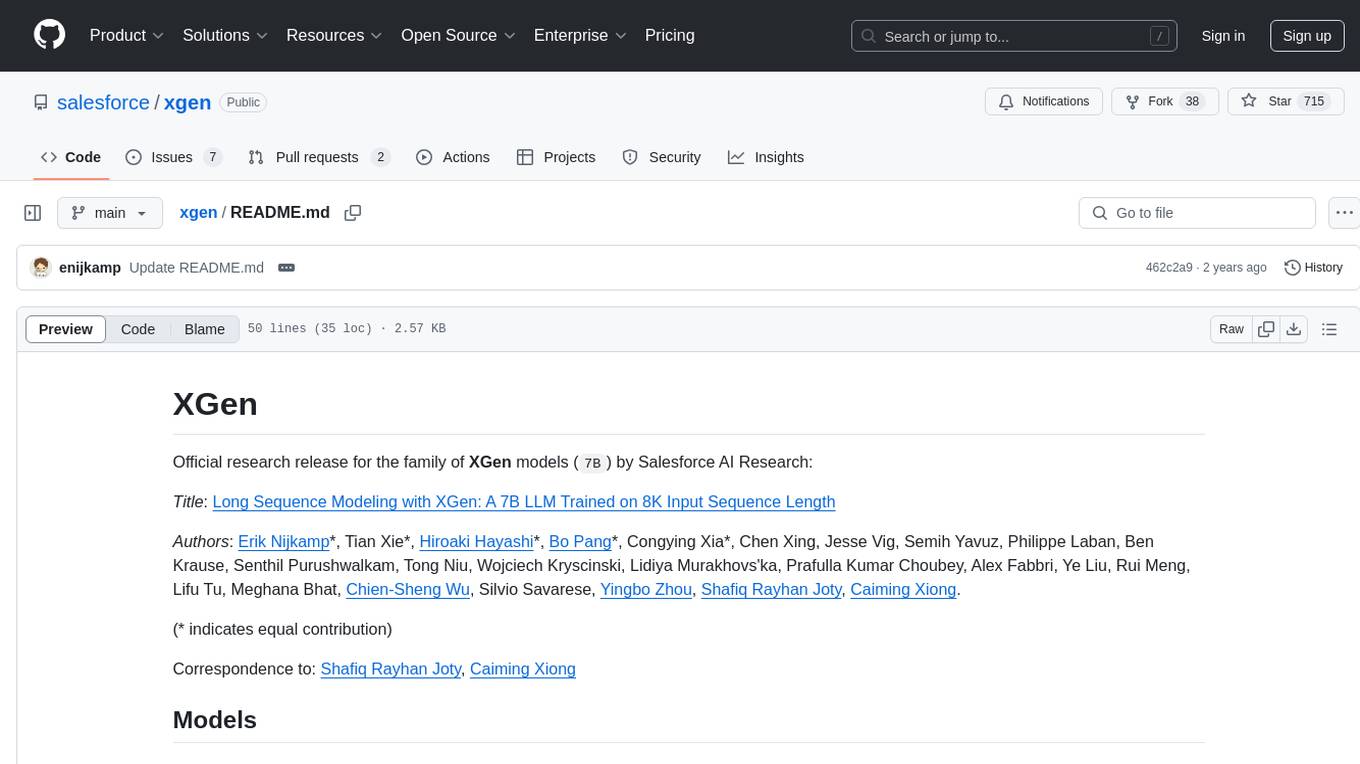
xgen
XGen is a research release for the family of XGen models (7B) by Salesforce AI Research. It includes models with support for different sequence lengths and tokenization using the OpenAI Tiktoken package. The models can be used for auto-regressive sampling in natural language generation tasks.
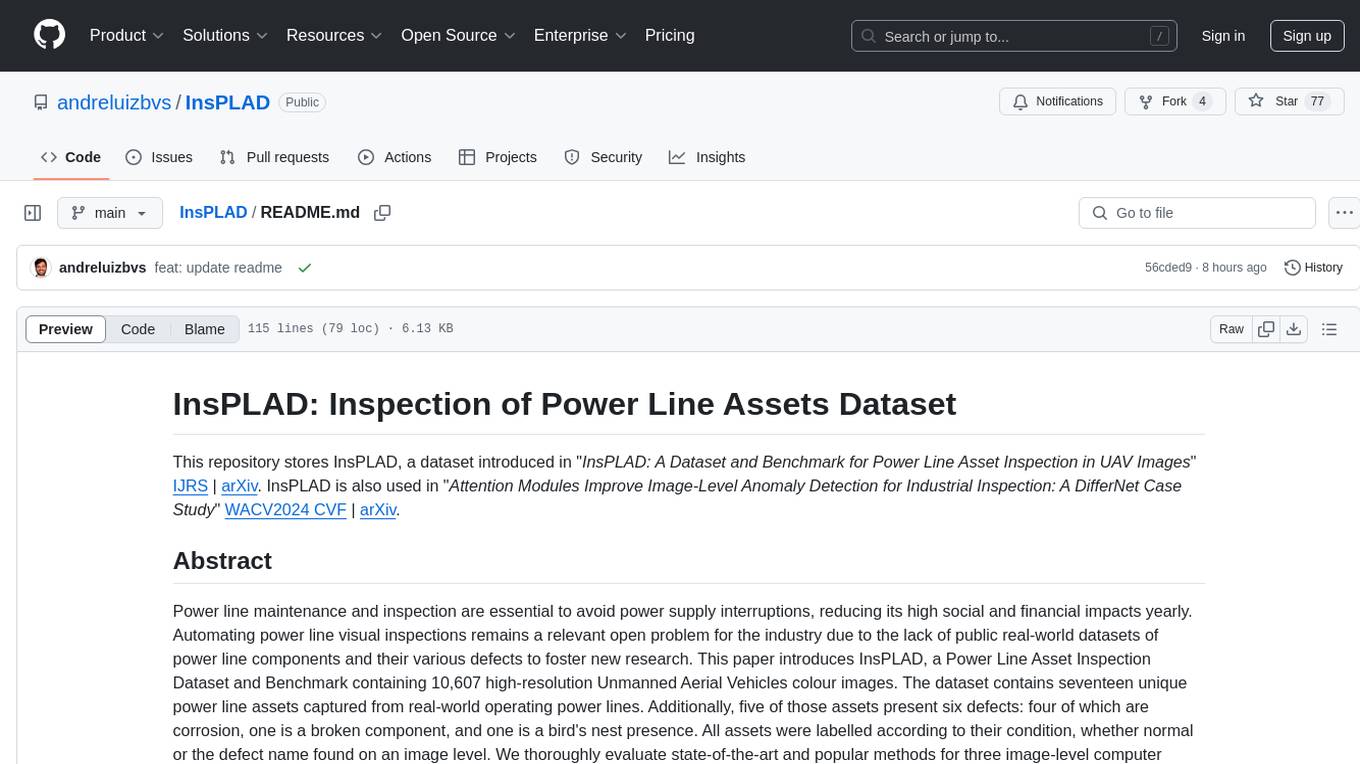
InsPLAD
InsPLAD is a dataset and benchmark for power line asset inspection in UAV images. It contains 10,607 high-resolution UAV color images of seventeen unique power line assets with six defects. The dataset is used for object detection, defect classification, and anomaly detection tasks in computer vision. InsPLAD offers challenges like multi-scale objects, intra-class variation, cluttered background, and varied lighting conditions, aiming to improve state-of-the-art methods in the field.
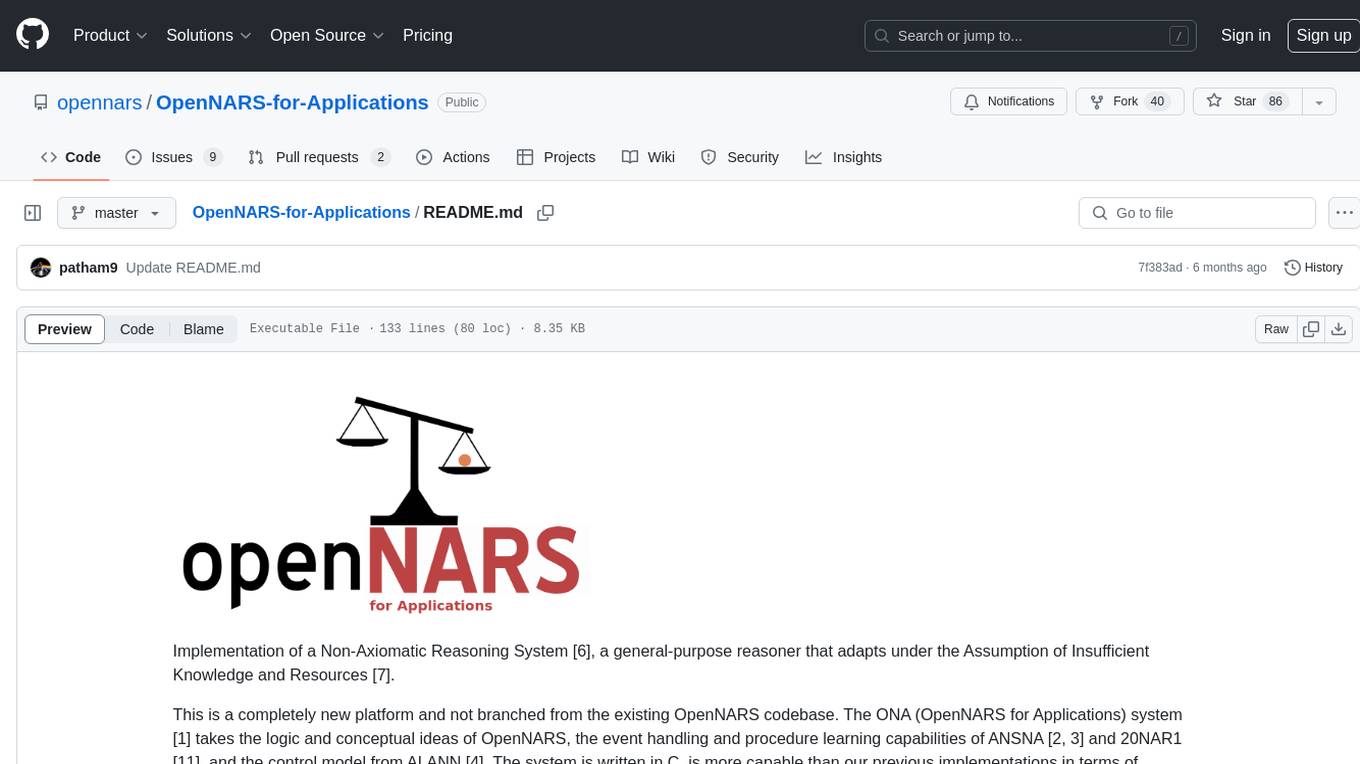
OpenNARS-for-Applications
OpenNARS-for-Applications is an implementation of a Non-Axiomatic Reasoning System, a general-purpose reasoner that adapts under the Assumption of Insufficient Knowledge and Resources. The system combines the logic and conceptual ideas of OpenNARS, event handling and procedure learning capabilities of ANSNA and 20NAR1, and the control model from ALANN. It is written in C, offers improved reasoning performance, and has been compared with Reinforcement Learning and means-end reasoning approaches. The system has been used in real-world applications such as assisting first responders, real-time traffic surveillance, and experiments with autonomous robots. It has been developed with a pragmatic mindset focusing on effective implementation of existing theory.
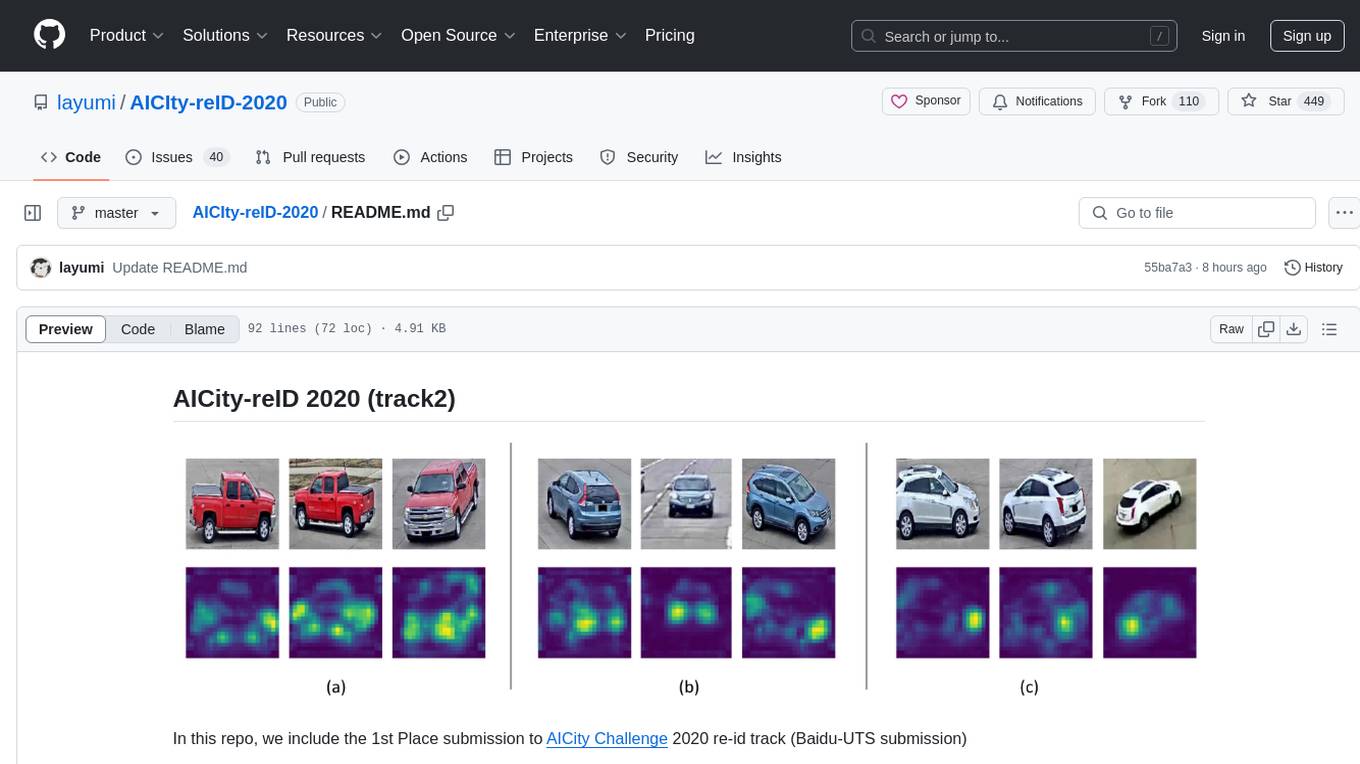
AICIty-reID-2020
AICIty-reID 2020 is a repository containing the 1st Place submission to AICity Challenge 2020 re-id track by Baidu-UTS. It includes models trained on Paddlepaddle and Pytorch, with performance metrics and trained models provided. Users can extract features, perform camera and direction prediction, and access related repositories for drone-based building re-id, vehicle re-ID, person re-ID baseline, and person/vehicle generation. Citations are also provided for research purposes.
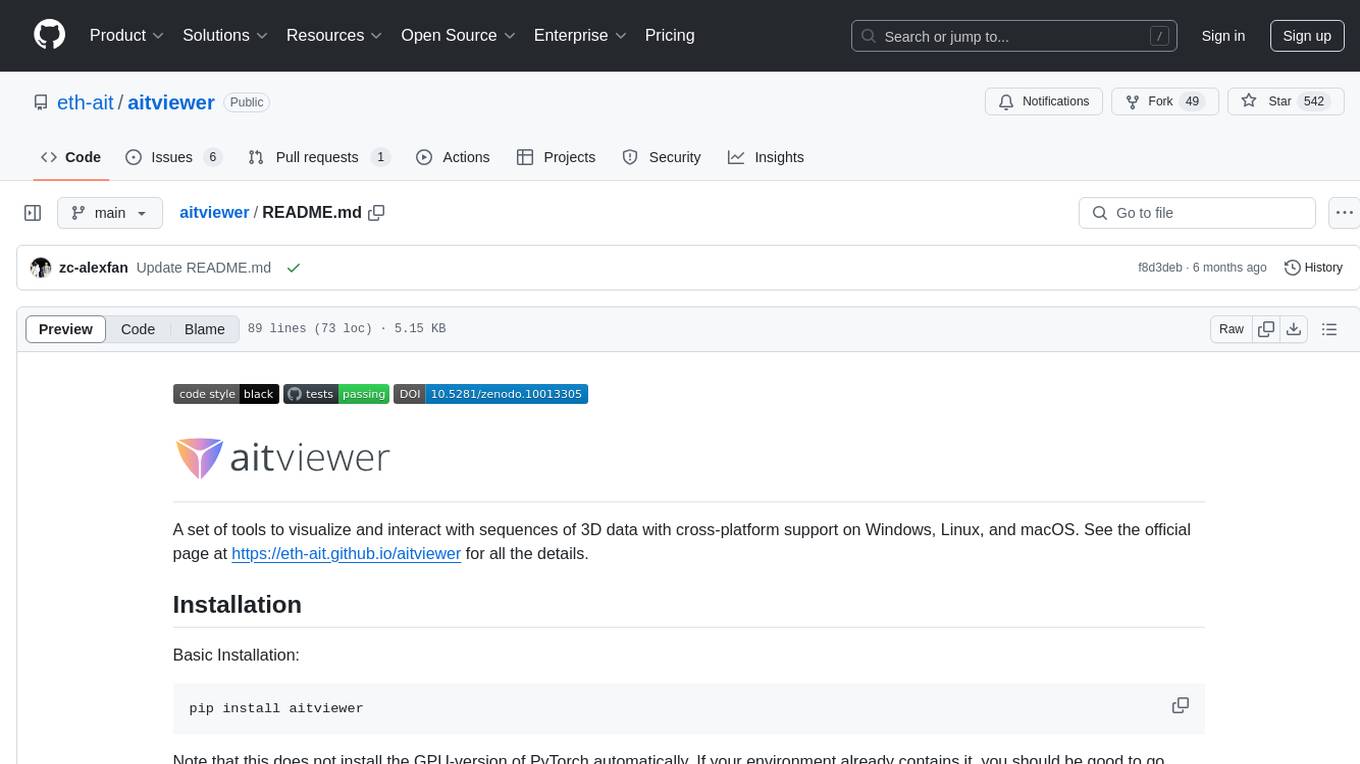
aitviewer
A set of tools to visualize and interact with sequences of 3D data with cross-platform support on Windows, Linux, and macOS. It provides a native Python interface for loading and displaying SMPL[-H/-X], MANO, FLAME, STAR, and SUPR sequences in an interactive viewer. Users can render 3D data on top of images, edit SMPL sequences and poses, export screenshots and videos, and utilize a high-performance ModernGL-based rendering pipeline. The tool is designed for easy use and hacking, with features like headless mode, remote mode, animatable camera paths, and a built-in extensible GUI.
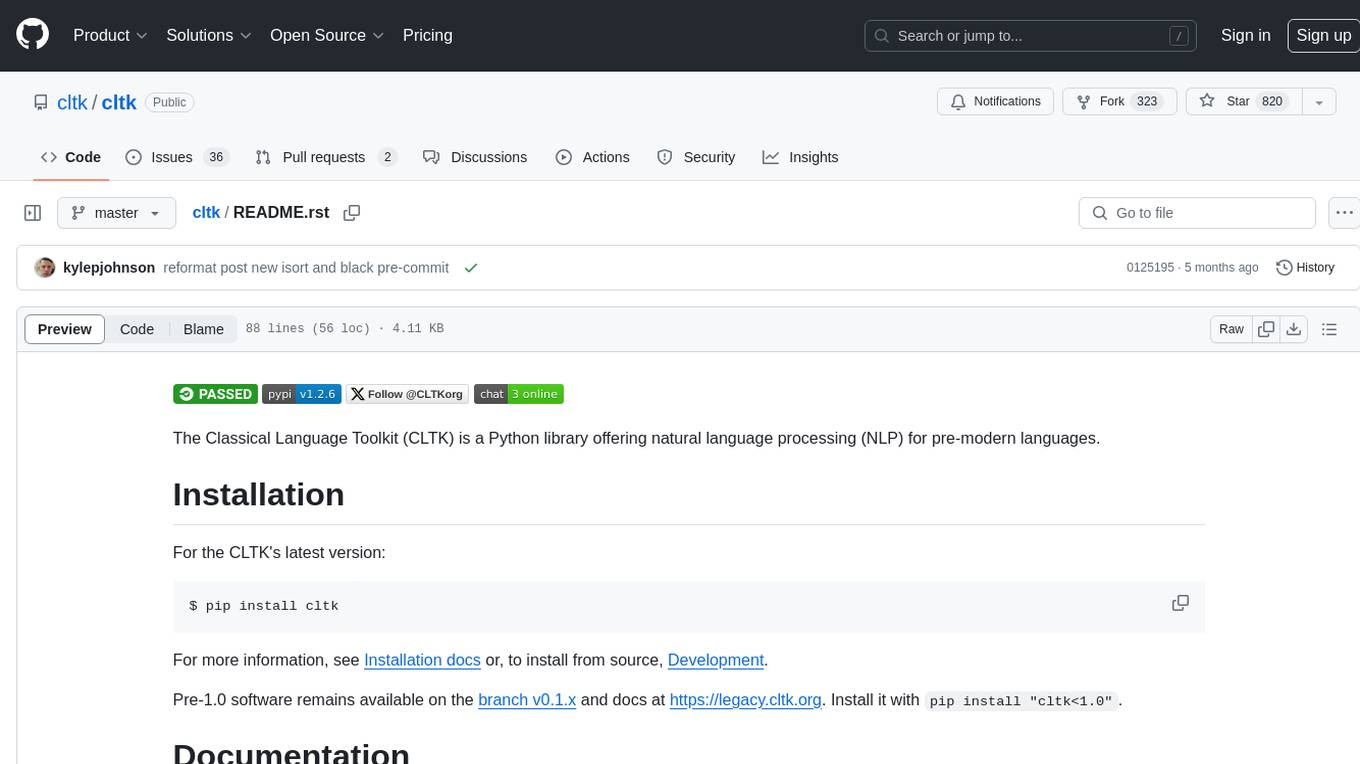
cltk
The Classical Language Toolkit (CLTK) is a Python library that provides natural language processing (NLP) capabilities for pre-modern languages. It offers a modular processing pipeline with pre-configured defaults and supports almost 20 languages. Users can install the latest version using pip and access detailed documentation on the official website. The toolkit is designed to meet the unique needs of researchers working with historical languages, filling a void in the NLP landscape that often neglects non-spoken languages and different research goals.

only_train_once
Only Train Once (OTO) is an automatic, architecture-agnostic DNN training and compression framework that allows users to train a general DNN from scratch or a pretrained checkpoint to achieve high performance and slimmer architecture simultaneously in a one-shot manner without fine-tuning. The framework includes features for automatic structured pruning and erasing operators, as well as hybrid structured sparse optimizers for efficient model compression. OTO provides tools for pruning zero-invariant group partitioning, constructing pruned models, and visualizing pruning and erasing dependency graphs. It supports the HESSO optimizer and offers a sanity check for compliance testing on various DNNs. The repository also includes publications, installation instructions, quick start guides, and a roadmap for future enhancements and collaborations.
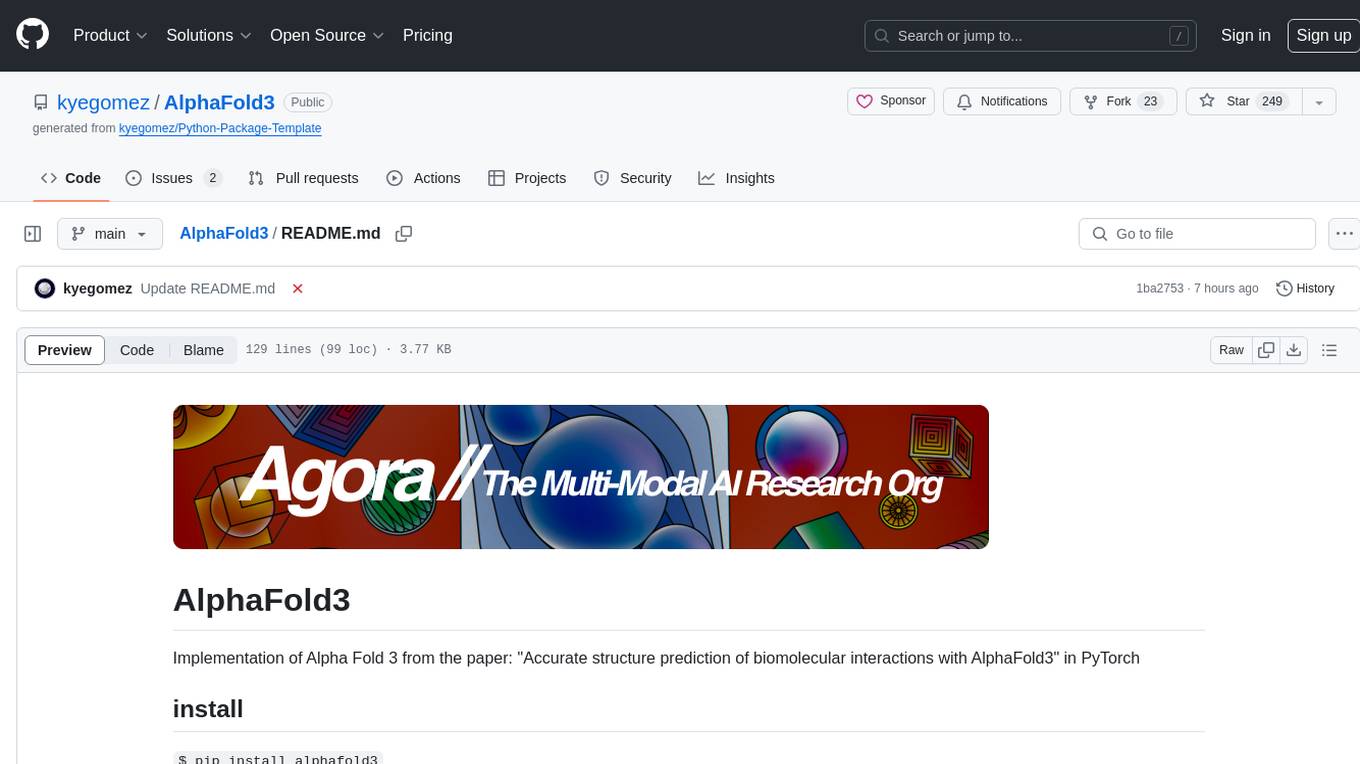
AlphaFold3
AlphaFold3 is an implementation of the Alpha Fold 3 model in PyTorch for accurate structure prediction of biomolecular interactions. It includes modules for genetic diffusion and full model examples for forward pass computations. The tool allows users to generate random pair and single representations, operate on atomic coordinates, and perform structure predictions based on input tensors. The implementation also provides functionalities for training and evaluating the model.
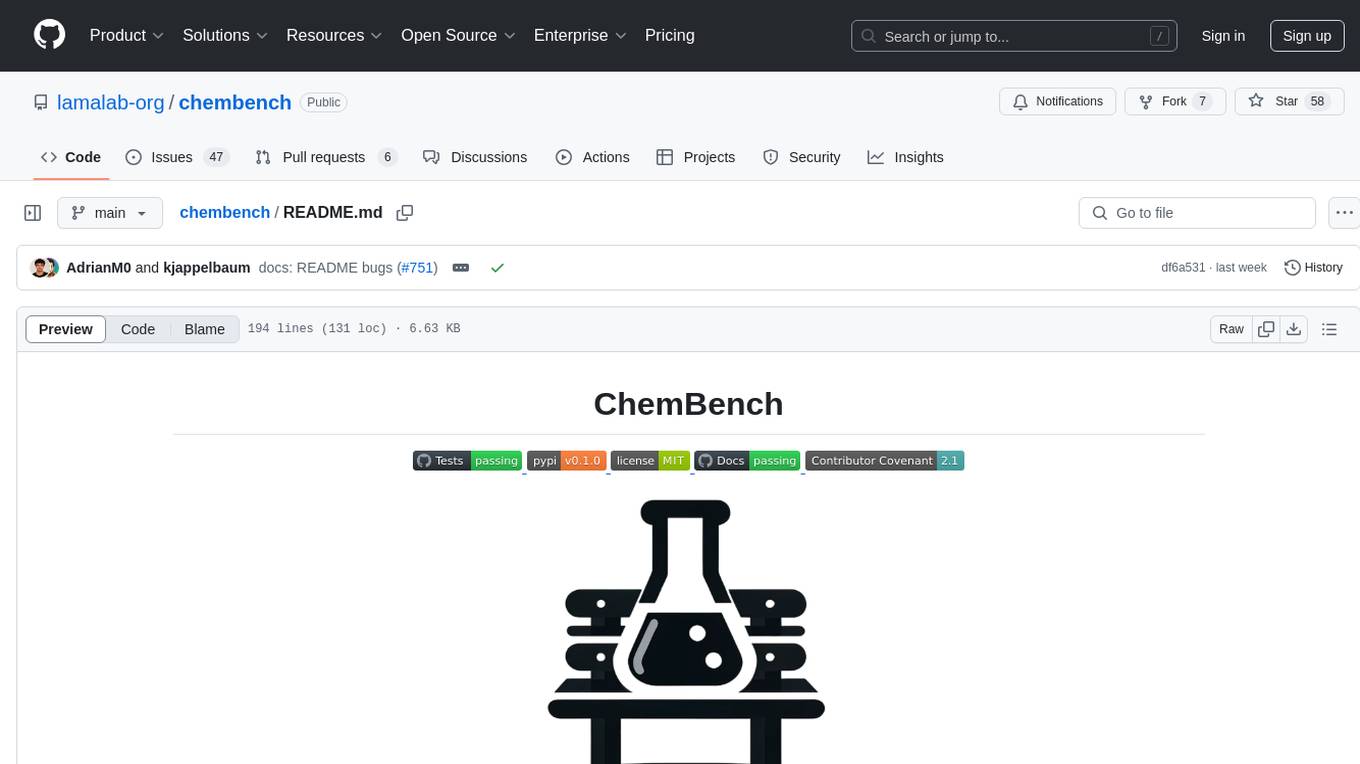
chembench
ChemBench is a project aimed at expanding chemistry benchmark tasks in a BIG-bench compatible way, providing a pipeline to benchmark frontier and open models. It enables benchmarking across a wide range of API-based models and employs an LLM-based extractor as a fallback mechanism. Users can evaluate models on specific chemistry topics and run comprehensive evaluations across all topics in the benchmark suite. The tool facilitates seamless benchmarking for any model supported by LiteLLM and allows running non-API hosted models.
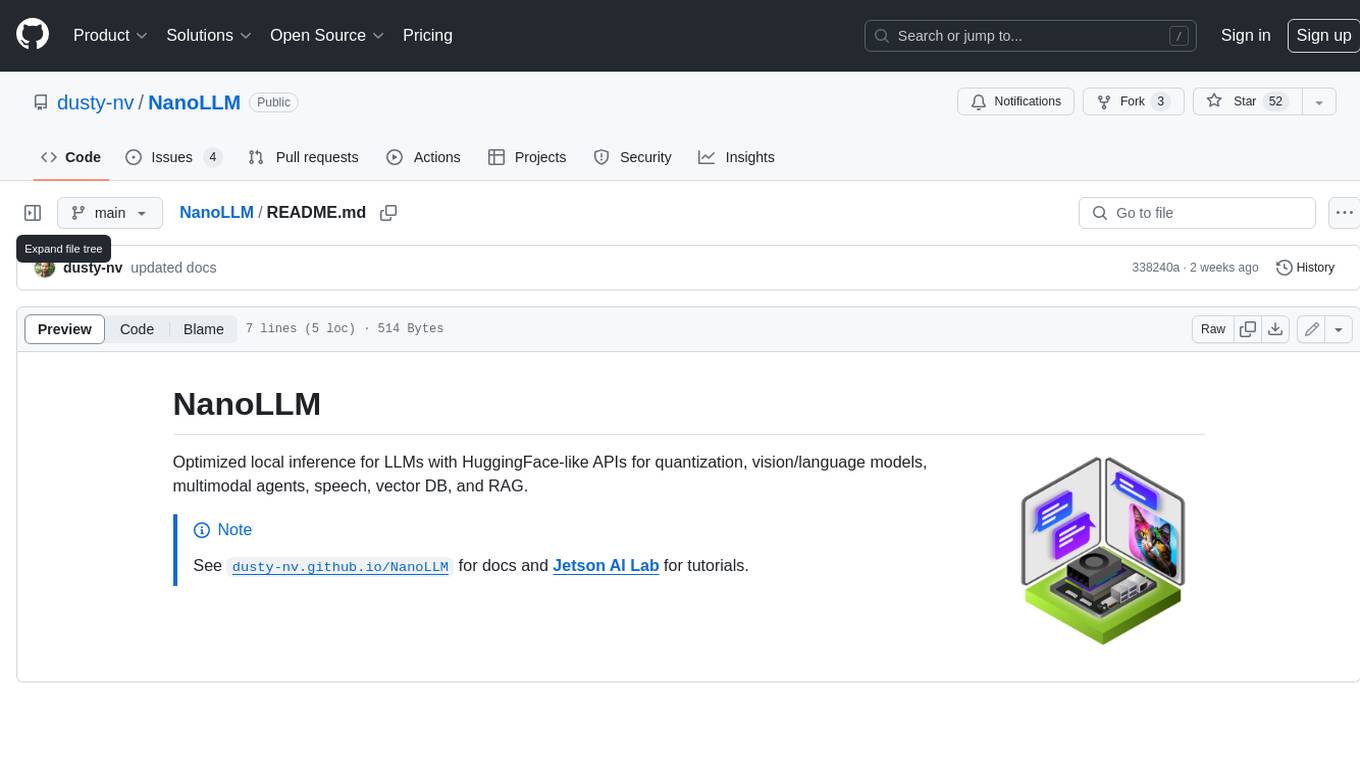
NanoLLM
NanoLLM is a tool designed for optimized local inference for Large Language Models (LLMs) using HuggingFace-like APIs. It supports quantization, vision/language models, multimodal agents, speech, vector DB, and RAG. The tool aims to provide efficient and effective processing for LLMs on local devices, enhancing performance and usability for various AI applications.
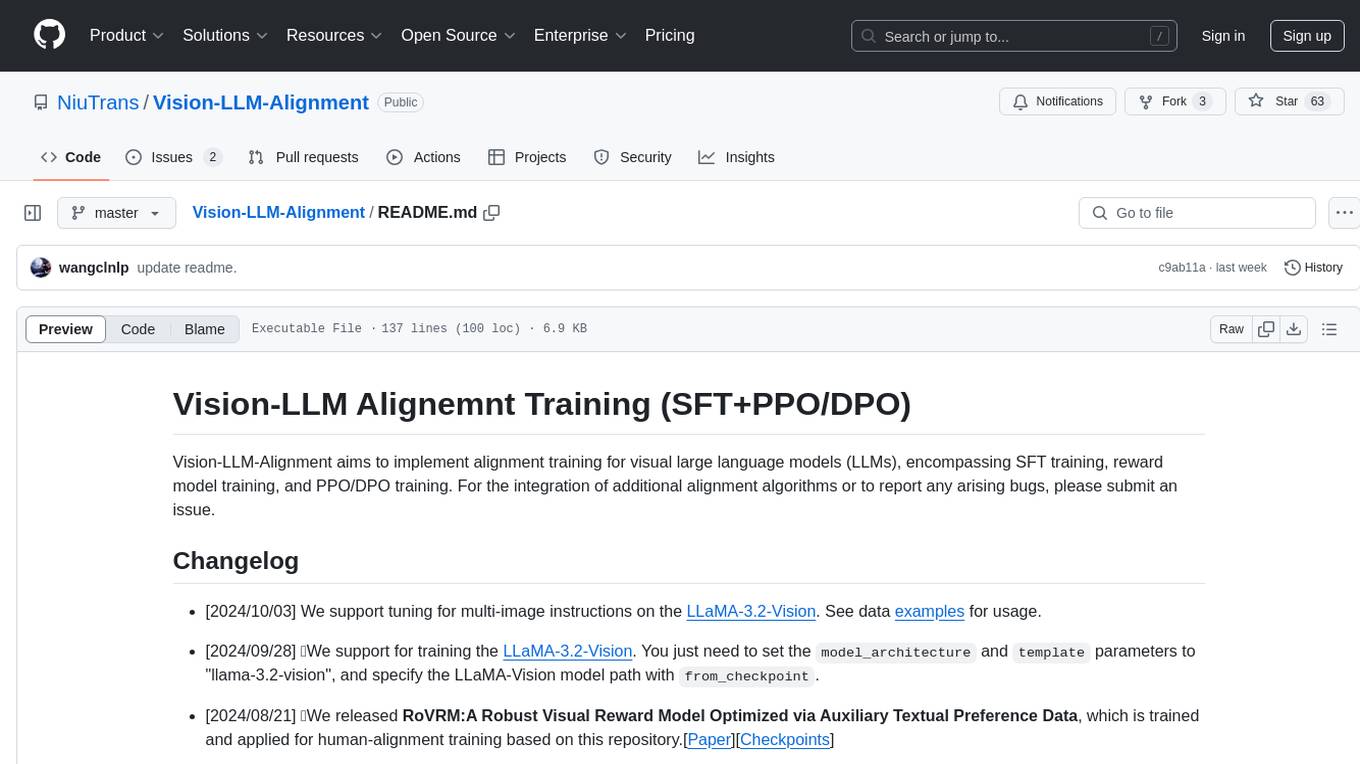
Vision-LLM-Alignment
Vision-LLM-Alignment is a repository focused on implementing alignment training for visual large language models (LLMs), including SFT training, reward model training, and PPO/DPO training. It supports various model architectures and provides datasets for training. The repository also offers benchmark results and installation instructions for users.
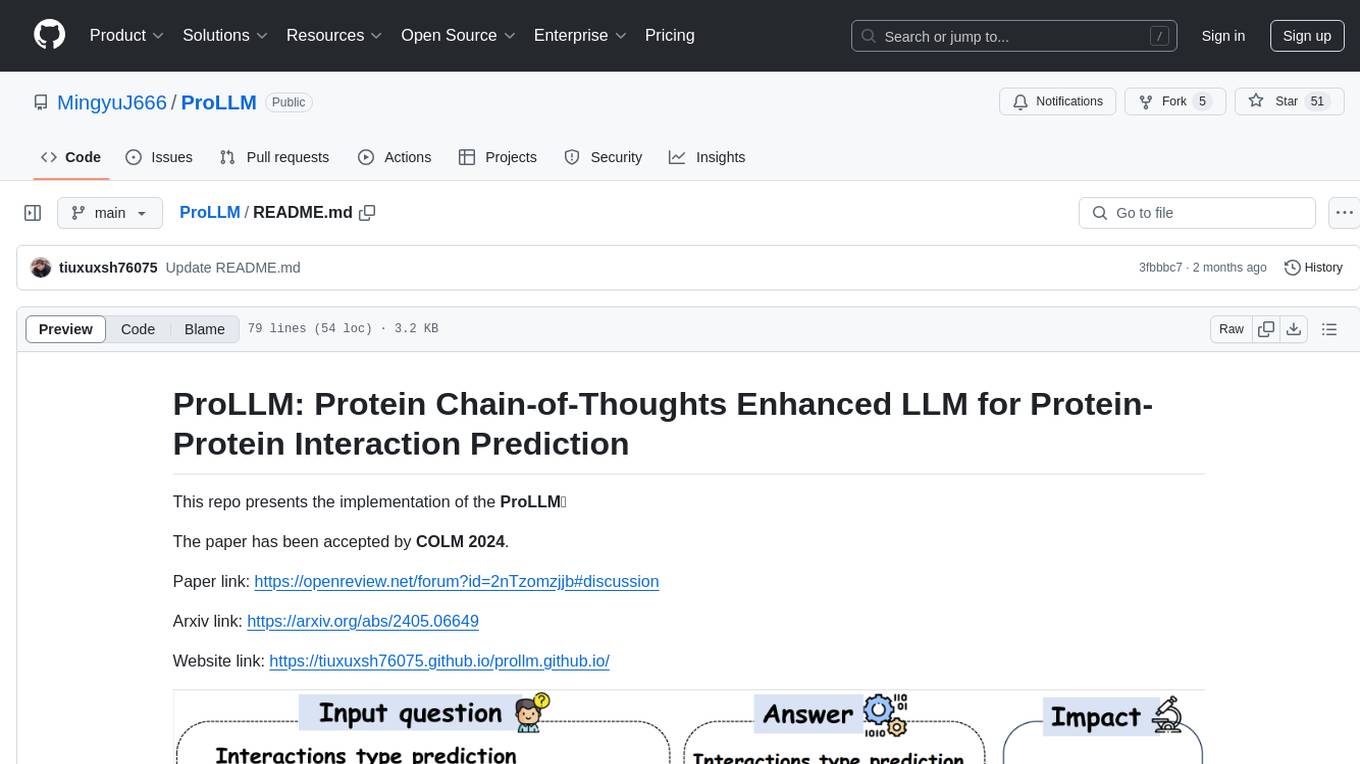
ProLLM
ProLLM is a framework that leverages Large Language Models to interpret and analyze protein sequences and interactions through natural language processing. It introduces the Protein Chain of Thought (ProCoT) method to transform complex protein interaction data into intuitive prompts, enhancing predictive accuracy by incorporating protein-specific embeddings and fine-tuning on domain-specific datasets.

VisionLLM
VisionLLM is a series of large language models designed for vision-centric tasks. The latest version, VisionLLM v2, is a generalist multimodal model that supports hundreds of vision-language tasks, including visual understanding, perception, and generation.
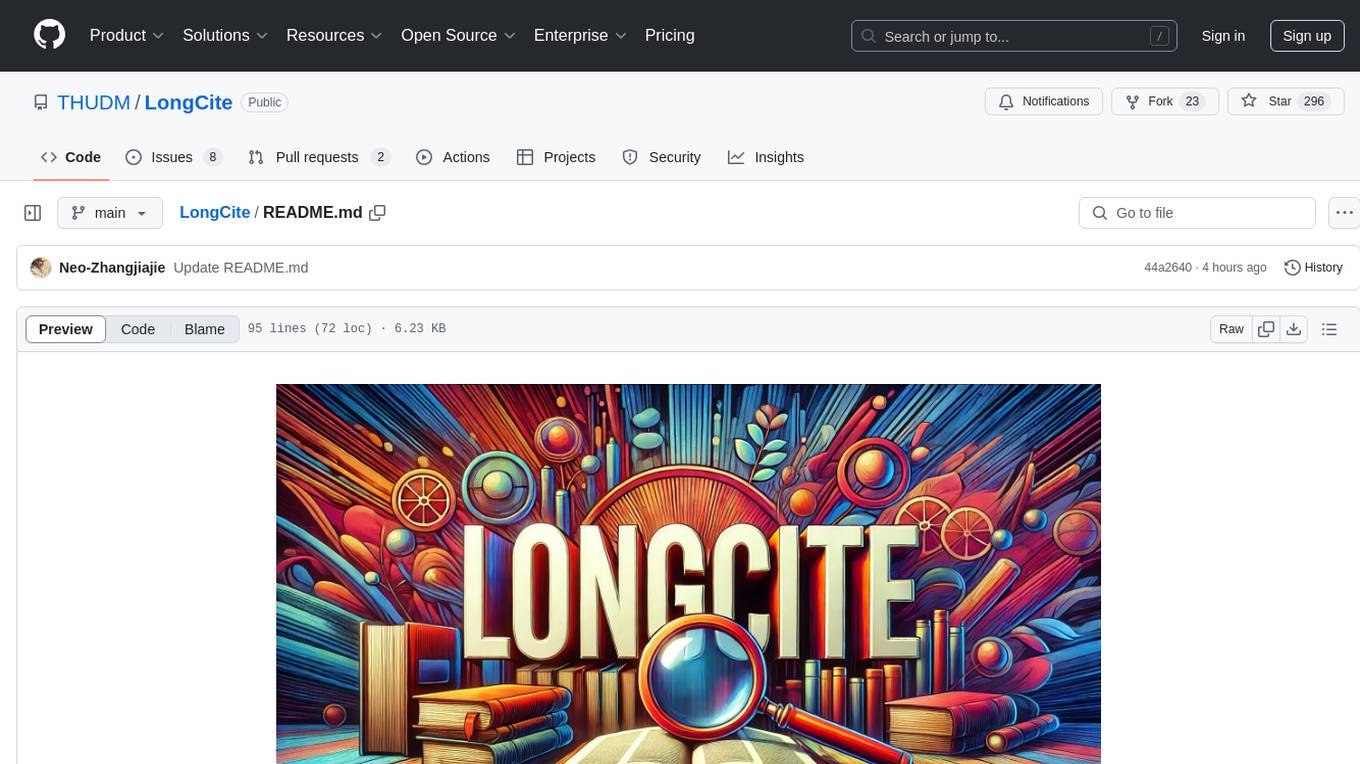
LongCite
LongCite is a tool that enables Large Language Models (LLMs) to generate fine-grained citations in long-context Question Answering (QA) scenarios. It provides models trained on GLM-4-9B and Meta-Llama-3.1-8B, supporting up to 128K context. Users can deploy LongCite chatbots, generate accurate responses, and obtain precise sentence-level citations. The tool includes components for model deployment, Coarse to Fine (CoF) pipeline for data construction, model training using LongCite-45k dataset, evaluation with LongBench-Cite benchmark, and citation generation.
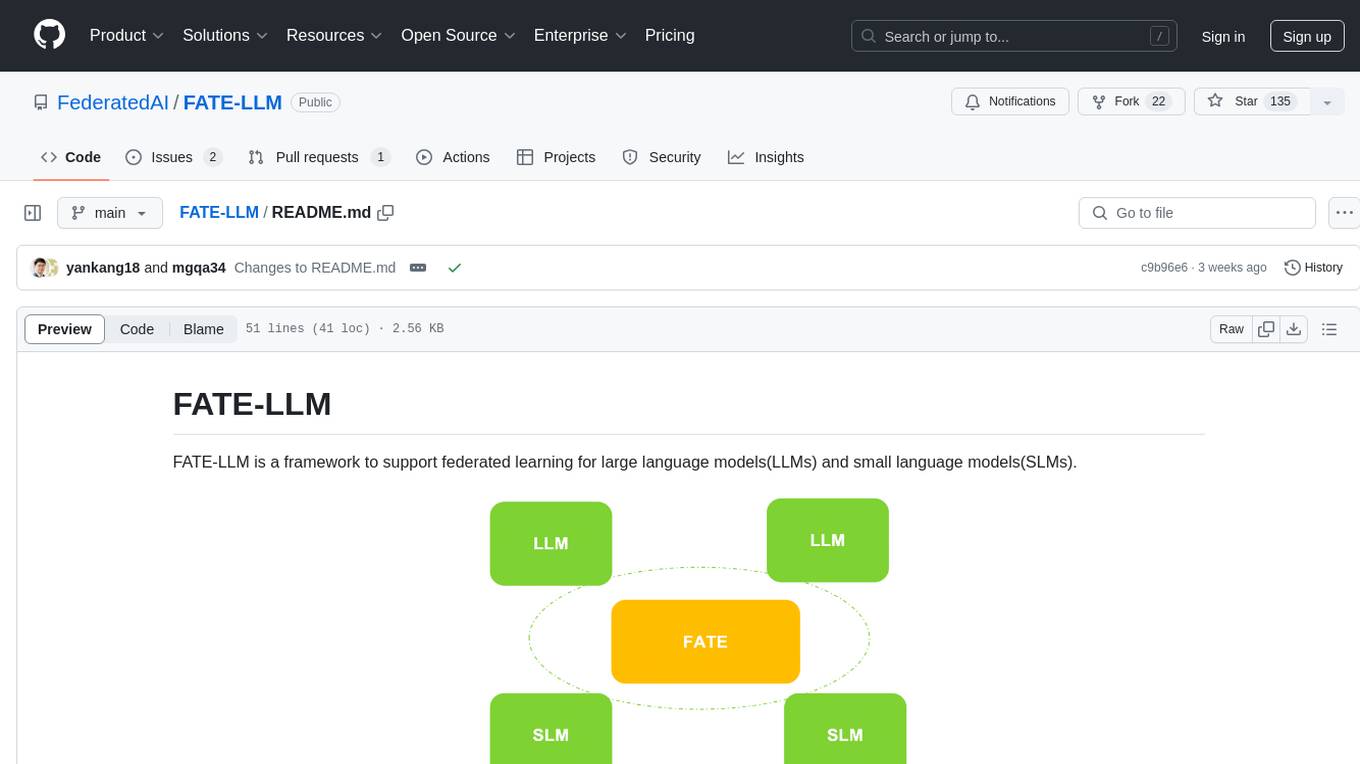
FATE-LLM
FATE-LLM is a framework supporting federated learning for large and small language models. It promotes training efficiency of federated LLMs using Parameter-Efficient methods, protects the IP of LLMs using FedIPR, and ensures data privacy during training and inference through privacy-preserving mechanisms.
For similar tasks

EDA-AI
EDA-AI is a repository containing implementations of cutting-edge research papers in the field of chip design. It includes DeepPlace, PRNet, HubRouter, and PreRoutGNN models for tasks such as placement, routing, timing prediction, and global routing. Researchers and practitioners can leverage these implementations to explore advanced techniques in chip design.
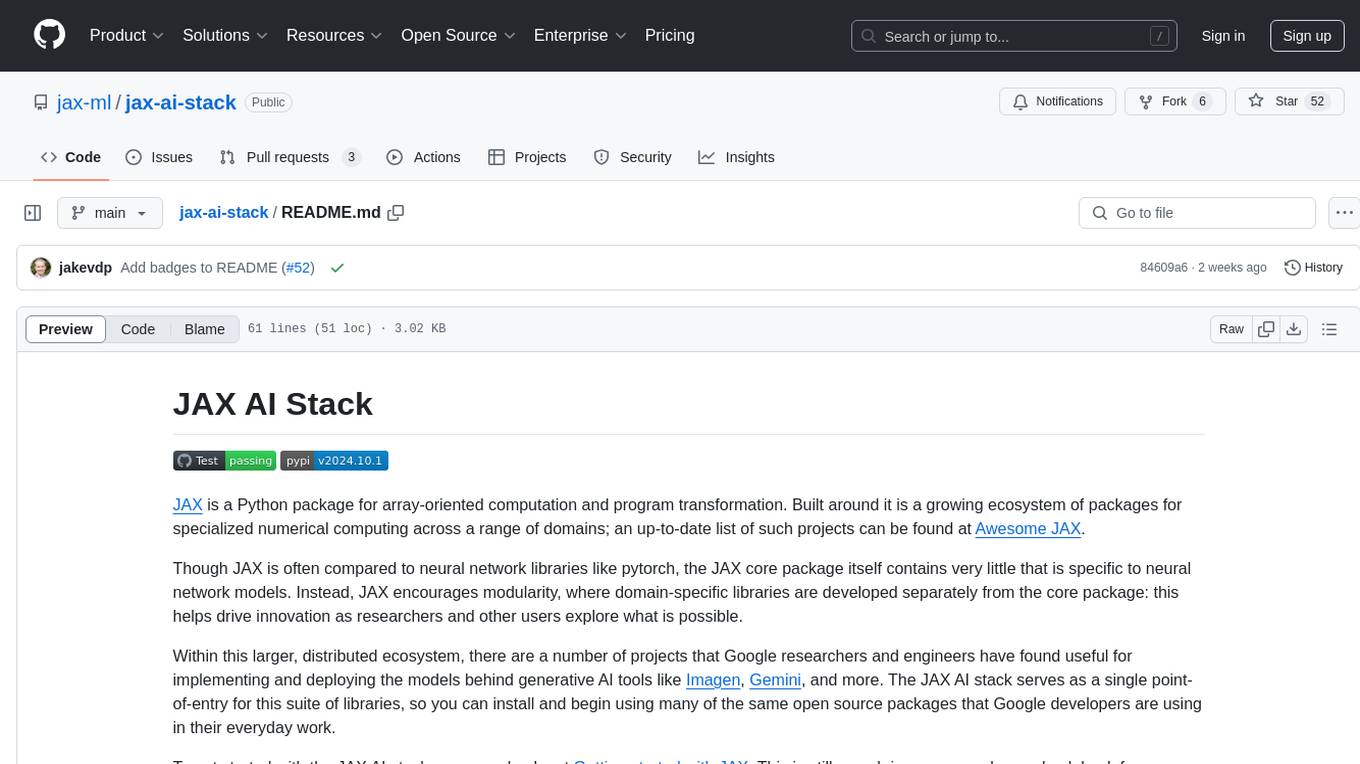
jax-ai-stack
JAX AI Stack is a suite of libraries built around the JAX Python package for array-oriented computation and program transformation. It provides a growing ecosystem of packages for specialized numerical computing across various domains, encouraging modularity and innovation in domain-specific libraries. The stack includes core packages like JAX, flax for building neural networks, ml_dtypes for NumPy dtype extensions, optax for gradient processing and optimization, and orbax for checkpointing and persistence utilities. Optional packages like grain data loader and tensorflow are also available for installation.
For similar jobs

sweep
Sweep is an AI junior developer that turns bugs and feature requests into code changes. It automatically handles developer experience improvements like adding type hints and improving test coverage.

teams-ai
The Teams AI Library is a software development kit (SDK) that helps developers create bots that can interact with Teams and Microsoft 365 applications. It is built on top of the Bot Framework SDK and simplifies the process of developing bots that interact with Teams' artificial intelligence capabilities. The SDK is available for JavaScript/TypeScript, .NET, and Python.

ai-guide
This guide is dedicated to Large Language Models (LLMs) that you can run on your home computer. It assumes your PC is a lower-end, non-gaming setup.

classifai
Supercharge WordPress Content Workflows and Engagement with Artificial Intelligence. Tap into leading cloud-based services like OpenAI, Microsoft Azure AI, Google Gemini and IBM Watson to augment your WordPress-powered websites. Publish content faster while improving SEO performance and increasing audience engagement. ClassifAI integrates Artificial Intelligence and Machine Learning technologies to lighten your workload and eliminate tedious tasks, giving you more time to create original content that matters.

chatbot-ui
Chatbot UI is an open-source AI chat app that allows users to create and deploy their own AI chatbots. It is easy to use and can be customized to fit any need. Chatbot UI is perfect for businesses, developers, and anyone who wants to create a chatbot.

BricksLLM
BricksLLM is a cloud native AI gateway written in Go. Currently, it provides native support for OpenAI, Anthropic, Azure OpenAI and vLLM. BricksLLM aims to provide enterprise level infrastructure that can power any LLM production use cases. Here are some use cases for BricksLLM: * Set LLM usage limits for users on different pricing tiers * Track LLM usage on a per user and per organization basis * Block or redact requests containing PIIs * Improve LLM reliability with failovers, retries and caching * Distribute API keys with rate limits and cost limits for internal development/production use cases * Distribute API keys with rate limits and cost limits for students

uAgents
uAgents is a Python library developed by Fetch.ai that allows for the creation of autonomous AI agents. These agents can perform various tasks on a schedule or take action on various events. uAgents are easy to create and manage, and they are connected to a fast-growing network of other uAgents. They are also secure, with cryptographically secured messages and wallets.

griptape
Griptape is a modular Python framework for building AI-powered applications that securely connect to your enterprise data and APIs. It offers developers the ability to maintain control and flexibility at every step. Griptape's core components include Structures (Agents, Pipelines, and Workflows), Tasks, Tools, Memory (Conversation Memory, Task Memory, and Meta Memory), Drivers (Prompt and Embedding Drivers, Vector Store Drivers, Image Generation Drivers, Image Query Drivers, SQL Drivers, Web Scraper Drivers, and Conversation Memory Drivers), Engines (Query Engines, Extraction Engines, Summary Engines, Image Generation Engines, and Image Query Engines), and additional components (Rulesets, Loaders, Artifacts, Chunkers, and Tokenizers). Griptape enables developers to create AI-powered applications with ease and efficiency.